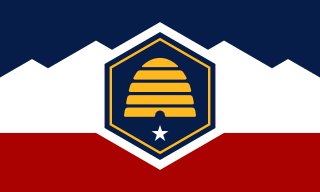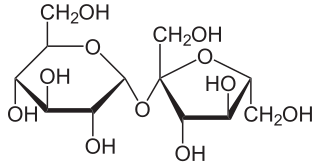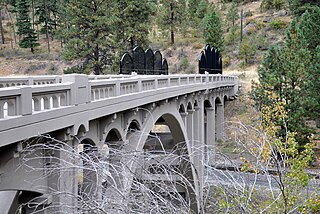The Oregon Sugar Company was a sugar beet growing and processing operation created by the founders of the Amalgamated Sugar Company of Utah. [1]

A sugar beet is a plant whose root contains a high concentration of sucrose and which is grown commercially for sugar production. In plant breeding it is known as the Altissima cultivar group of the common beet. Together with other beet cultivars, such as beetroot and chard, it belongs to the subspecies Beta vulgaris subsp. vulgaris. Its closest wild relative is the sea beet.
The Amalgamated Sugar Company is an American sugar beet-refining company run on a cooperative basis. It was founded in 1897 in Logan, Utah, and is now located in Boise, Idaho. The company markets its sugar under the White Satin brand.

Utah is a state in the western United States. It became the 45th state admitted to the U.S. on January 4, 1896. Utah is the 13th-largest by area, 30th-most-populous, and 11th-least-densely populated of the 50 United States. Utah has a population of more than 3 million according to the Census estimate for July 1, 2016. Urban development is mostly concentrated in two areas: the Wasatch Front in the north-central part of the state, which contains approximately 2.5 million people; and Washington County in Southern Utah, with over 160,000 residents. Utah is bordered by Colorado to the east, Wyoming to the northeast, Idaho to the north, Arizona to the south, and Nevada to the west. It also touches a corner of New Mexico in the southeast.
The company was incorporated February 12, 1898, by David Eccles, Charles W. Nibley, and George Stoddard. [2] A shareholder meeting was held on February 26, 1898 in Baker City, Oregon, and a factory was built in La Grande, Oregon, thereafter. [2] Eccles was president of the company and the board of directors included Thomas R. Cutler, Nibley, Stoddard and William Eccles. [2] The factory was built by the E. H. Dyer Construction Company of Cleveland, Ohio, and was "almost identical" to the layout of Amalgamated's Ogden factory. [2]

David Eccles was an American businessman and industrialist who founded many businesses throughout the western United States and became Utah's first multimillionaire.

Charles Wilson Nibley was the fifth presiding bishop of The Church of Jesus Christ of Latter-day Saints between 1907 and 1925 and a member of the church's First Presidency from 1925 until his death.
George E. Stoddard was a real estate financier who pioneered the use of the sale-and-leaseback transaction.
The sugar beet refining factory in La Grande was built in 1898 and Oregon Sugar also founded the company town of Nibley, Oregon, where Mormons raised sugar beets for the factory. [1] [3]

A company town is a place where practically all stores and housing are owned by the one company that is also the main employer. Company towns are often planned with a suite of amenities such as stores, churches, schools, markets and recreation facilities. They are usually bigger than a model village.
Nibley is an unincorporated historic community in Union County, Oregon, United States, about 11 miles east of La Grande on Oregon Route 237 in the Grande Ronde Valley.
By 1904, due to farmer reluctance, Oregon Sugar began farming sugar beets directly, after purchasing 1,182 acres (4.78 km2) of land. [2] The region was never very productive for sugar beets, and closing the factory was seriously considered in 1907. [2] An outside expert was brought in who made a "very voluminous report", which confirmed the area was not likely to become more productive, even with changes. [2] In 1908, the factory only operated on 28 days due to low yields, and a special committee was appointed to plan for the removal of the factory. [2] The factory, "a mistake from the beginning and soon recognized as such", was shuttered in 1912. [1] [2] The only reason the factory was not removed sooner was the need for a new location for the machinery. [2]
An 1898 account of the sugar factory was published in the La Grande Daily Chronicle:
- The main building has 320 tons of structural steel and upwards of 1500 tons of machinery…The beets as they come from the shed are carried to the factory in a stream of water; they are then thoroughly washed and elevated to the upper part of the building, where they go through a slicing machine. After being sliced they go into a battery of cells, which are heated by steam, and the juice is extracted from the pulp by a process called "diffusion," which is exactly the same as extracting the essence of coffee from the berry or of tea from the leaves. The juice is then subjected to a chemical process, being mixed with lime…It is expected that 6,000,000 pounds of granulated sugar will be made this season… [4]






